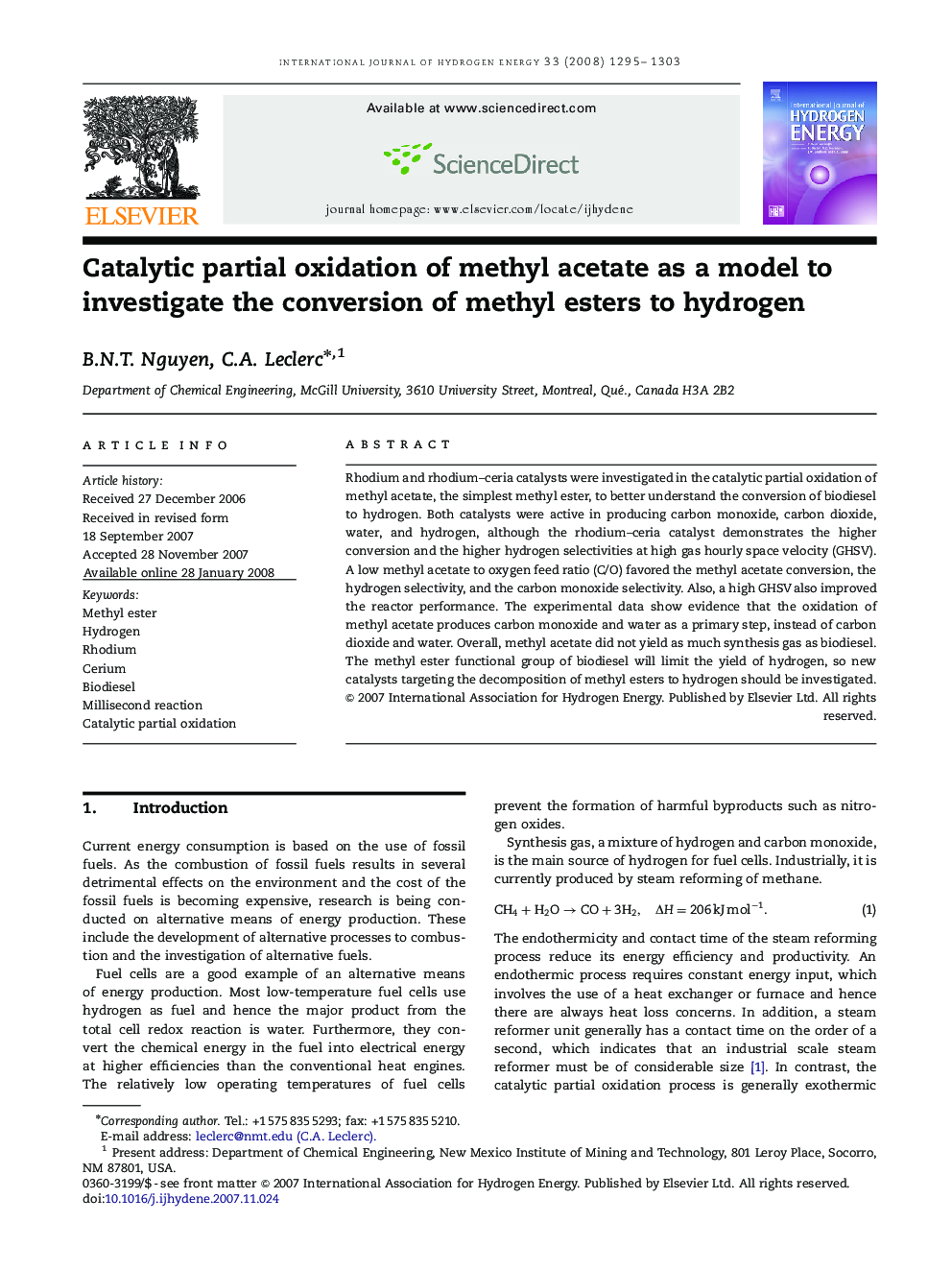| Article ID | Journal | Published Year | Pages | File Type |
|---|---|---|---|---|
| 1274704 | International Journal of Hydrogen Energy | 2008 | 9 Pages |
Rhodium and rhodium–ceria catalysts were investigated in the catalytic partial oxidation of methyl acetate, the simplest methyl ester, to better understand the conversion of biodiesel to hydrogen. Both catalysts were active in producing carbon monoxide, carbon dioxide, water, and hydrogen, although the rhodium–ceria catalyst demonstrates the higher conversion and the higher hydrogen selectivities at high gas hourly space velocity (GHSV). A low methyl acetate to oxygen feed ratio (C/O) favored the methyl acetate conversion, the hydrogen selectivity, and the carbon monoxide selectivity. Also, a high GHSV also improved the reactor performance. The experimental data show evidence that the oxidation of methyl acetate produces carbon monoxide and water as a primary step, instead of carbon dioxide and water. Overall, methyl acetate did not yield as much synthesis gas as biodiesel. The methyl ester functional group of biodiesel will limit the yield of hydrogen, so new catalysts targeting the decomposition of methyl esters to hydrogen should be investigated.
